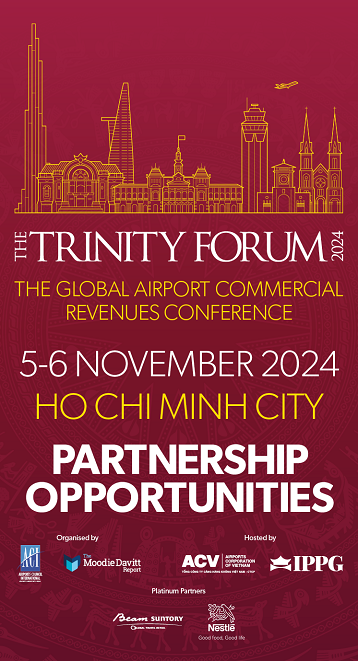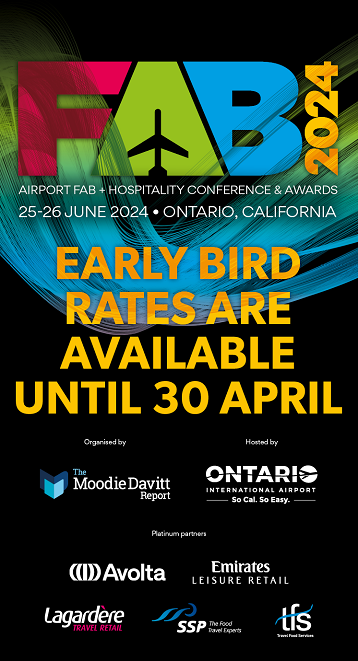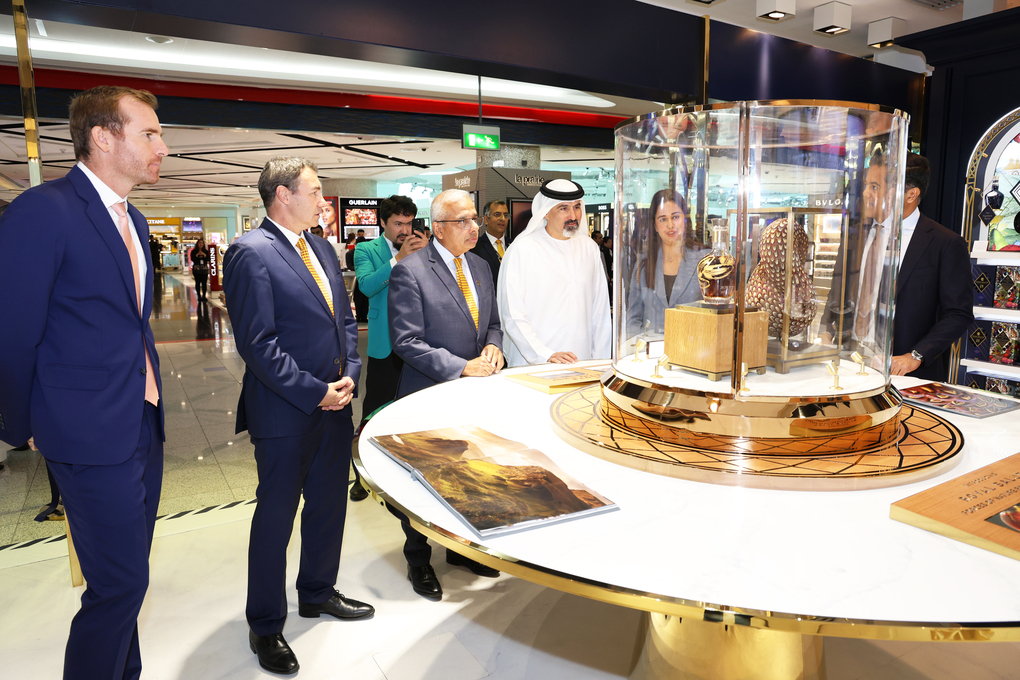Introduction: For luxury Maison Cartier it was, to quote Shakespeare’s Richard III, the winter of our discontent. When Cyrille Vigneron, now a veteran of 30 years with parent company Richemont, took over the reins as President & CEO of Cartier in late 2016, the company was, like many of its luxury peers, in some disarray. In particular, Cartier’s crucial watches business had faced what he dubs “a serious backfire”, largely thanks to over-supply of inventory in key markets and a crackdown on conspicuous consumption and official gift-giving in China.
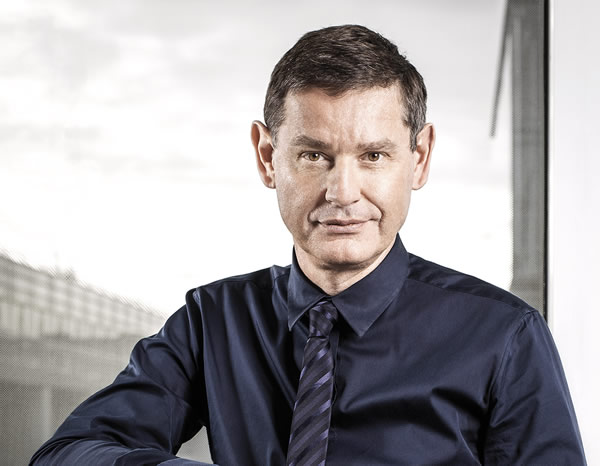
“When I took over in winter 2016, the watch market was depressed, and Cartier also had a Cartier problem – Cartier specific,” he recalls. “So, I had to fix both things and implemented a serious buyback of inventories from the dealers on a substantial scale. I also then reoriented the product offer and communications strategy and reviewed our network. This has been paying off.”
The Vigneron-led renaissance of the luxury Maison has focused on storytelling, social responsibility and new communications strategies (including the casting of celebrities in its campaigns for the first time, for example, Jake Gyllenhaal as the face for Santos de Cartier and Annabelle Wallis, for Panthère de Cartier). The revitalisation also incorporated a renewed focus on the travel retail channel with which the company had grown disenchanted, at least in the airport sector.
Vigneron, an avowed internationalist, music lover and a devotee of Japanese culture, is convinced that travel retail offers an outstanding platform for the Maison’s luxury portfolio. But not at any cost. He says that the channel must be based on long-term investment, product quality and sustainability.
At the recent TFWA World Exhibition in Cannes, he outlined to Martin Moodie his view of the luxury and travel retail sectors. The interview was filmed and edited by Peter Marshall of Airport Dynamics TV. A written summary of that interview follows. Click on the image below to watch the full fascinating interview.
| Cyrille Vigneron has been the President and Chief Executive Officer of Cartier International, a Board Director and a member of the Senior Executive Committee of the Richemont Group since 1 January 2016. Prior to this role, he was President of LVMH Japan and worked for Richemont from 1988 to 2013, rising to become Managing Director of Cartier Japan, President of Richemont Japan, and finally, Managing Director of Cartier Europe. Cyrille Vigneron started his career at Companie Générale des Eaux before joining Pechiney. He is a graduate of ESCP Europe business school. Born in 1961, a French national and a father of four children. he is a music lover and a devotee of Japanese culture translated in the writing and publication of a book, De geishas en mangas: Chroniques du Japon d’aujourd’hui (‘Of geishas in mangas: Chronicles of today’s Japan’) |
Martin Moodie: When you took on the role, you talked about diving back into the Cartier heritage. Despite a very profound change in the consumer profile, you’re harking back to traditional values but perhaps communicating them in a more modern way?
Cyrille Vigneron: Yes, I think the key point is that we are a timeless brand. What defines us is the designs that go through the test of time. It doesn’t mean they age well. They don’t age. When you look at a Cartier product, you can’t define when it was created.
The Juste un Clou, which is doing very well now, was designed 50 years ago. The Tank Américaine was designed 30 years ago but based on a model designed 100 years ago. The designs last. So, having fresh looks on things is what matters in our case.
Ten years ago, there were no iPhones. In ten years from now, they will be replaced by something else, but in ten years from now, people will appreciate the beauty of a Cartier watch because it is timeless
How would you sum up where you’ve taken the company during your leadership tenure?
I would say I’ve put Cartier back on the radar, given it back its energy, and brought back consciousness of what makes it truly distinctive, and how to make it anew.
When you buy an old mansion… first you clean the bushes, then you open the windows, then you clean the walls to find the beautiful frescoes. And when you do that, you realise how beautiful it is. Then you can make it more modern and add a little kind of art, but first you have to do that [restoration] job.

I’m not trying to follow the trends. I’m not trying to follow the fashion. I’m not trying to say, “Let’s chase the very young millennials.” The very young millennials are teenagers, and teenagers aren’t stable in their perception. They grow their personality. These ones [today] want to engage. They want to be useful. They want to have impact. They want to have fun. They have a kind of very present and immediate focus… which… can look a bit frivolous, but there is a freshness in there which is quite nice compared to a world that can be looked at as cynical.
But even those slightly above [that age profile] are looking for the same thing. You know, there’s a lot of fashion designers bringing new concepts, like Virgil Abloh for Off-White or Demna Gvasalia for Balenciaga. They both like Cartier. They are in their thirties. They are very stylish millennials and they love the Cartier brand, because it talks to them in what is the purity of design.
You’re here at this grand event for the travel retail industry. Your company has had an interesting relationship with the channel. It’s not long ago that Cartier questioned the role of the channel, particularly the airport side of the business. It appears to me that you’re really coming back with a new and concerted push into travel retail…
…Yes.
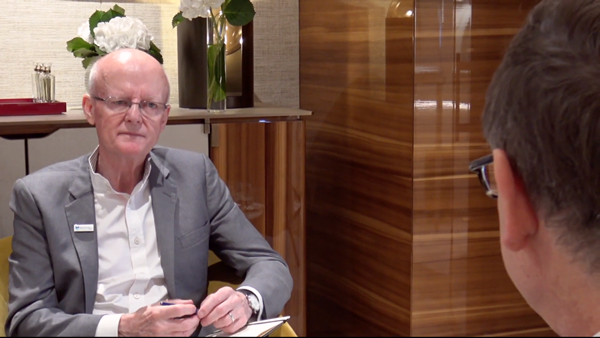
How then do you see the role of travel retail to Cartier?
In fact, there is less and less difference between travel retail and [general] retail in itself. Or even with e-commerce retail. Because basically now all of our customers are travelling. There is less and less difference between those who are, say, a local, or those who are international clients.
“Travel retail used to be about quick shopping. Now, the airports are a nice place to bring customers during their journey.” – Cyrille Vigneron
Europe is full of international clients coming from one city to the next. I’m traveling all the time, I’m sure you’re traveling all the time. And so, you start to think about the different places where you have occasion to face luxury. In fact, downtown shopping environments are often geared for tourists, like in London, Harrods. But those consumers also go through Heathrow Airport. The French love shopping in Paris, but they also stop in Charles de Gaulle. Having a presence in these key airports where people not only pass by but also want to have an occasion to see and to discover, to try on, or to buy, is becoming increasingly important.
It depends on which airport, though. It’s the same question when you have a shopping mall or when you have a street… not so many are luxury streets. It’s the same for airports. Now some of them are really becoming nice luxury environments where customers who travel want to also find something – either because they have time, or because they are just passing by.
The notion of what is retail and travel retail has been blurring. And so, we reconsidered our presence in travel retail [deciding that] we must have something which is visible, nice, and can give the customers the experience they expect at that moment. And if we can follow them, either at that moment, or in our customer database, or through digital, then we can also treat them in different places.
The Cyrille Vigneron perspective On personal inspirations “I’m inspired mainly by philosophers and musicians. Bach, for example, inspires me because of the way he structured his music. It inspires me to think about the entirety of what I do. He has composed music such as The Well-Tempered Clavier before piano even existed, but the pieces were even more beautiful when played on the piano. I think about Bach, what he would do when I think about the [big picture].” – South China Morning Post ‘Style’ magazine, August 2018 On digital communication and new-generation consumers “There’s a tendency to think of millennials as the next generation when they’re already here. Cartier makes 43% of its sales to under-35s. In Asia, it’s more than half. The question being how to talk to them. This means digital, WhatsApp, WeChat and Line. It means advertising but events too. New generations live more in the present and are quick to respond to the things they see and feel. Long, overwrought messages don’t appeal to them.” – FHH Journal, February 2018 On emergent Chinese consumers “We see some very young people from China quickly buying very expensive things. What we considered in the past an initiation path, where you would buy something affordable in your 20s, something more paved in your 30s and something more gorgeous in your 40s — you don’t have those patterns anymore. You have all patterns.” – Business of Fashion September 2016 On management philosophy In the Art of War, Sun Tzu said, ‘any war reduces the energy of the world’, so the best is not to go to war, but rather to turn your enemies into your allies, which I think is really true. Do not waste your energy on useless fights. That’s my management philosophy.” – Jing Daily, April 2018 On competition from new digital technology “Ten years ago, there were no iPhones. In ten years from now, iPhones will be replaced by something else, but in ten years from now, people will appreciate the beauty of a Cartier watch because it is timeless.” – The Moodie Davitt Report, November 2018 “Do we have to do connected watches or not? think we should not, because we have a promise of durability, and [the connected watch] is the promise of obsolescence.” – Financial Times, September 2016 |
I was very surprised when I visited the Heathrow T5 store, where it’s mostly Europeans travelling. It’s not traffic for Asia. And the loyalty rate of our customers was 15 percent. More than Selfridges! Which means that most of them are constantly moving from London to different places, and they like to stop there at a time when… they have some time to enjoy it.
So, we can build loyalty through that channel. That is new. Travel retail used to be about quick shopping. Now, the airports are a nice place to bring customers during their journey.
Agreed. I would say those great airports of the world that you have referred to represent a very grand stage for a brand. And they attract a very important audience coming in to watch what’s happening on that stage. Almost a crossroads of humanity. It’s a rich tapestry, isn’t it? Provided you and your retail partners can execute it right.
Absolutely. That’s why this change in customer behavior and what they expect from an airport and how the entire [travel retail] profession has changed their view has been key.
So, what would travel retail success look like to you?
Well, travel retail success would be the same as other retail success. It’s anywhere where you have a beautiful presence in key areas, which is about building a good image for a luxury brand, and where customers can find an experience they want.
In an airport you have to take into account that they have limited time. But… if you can find a contact with the customers in there, during that quick transaction, and then you invite them to a beautiful show somewhere else, then you’ve built your relationship with them.
You can enjoy an historic restaurant that… has a lot of atmosphere but sometimes you want something quick. So, you need to choose a different restaurant. But you may want to have good food. It’s not a choice between fast and bad. And that’s where, say, Spanish tapas or some Japanese restaurants are both quick and excellent, something simple, casual, and meeting different needs.
The same customers have different needs for different periods on different occasions. If we understand that properly, we can have retail, travel retail, e-commerce, communication and events, all allowing them to enjoy the Maison at different times of their life.
Tell us about your business philosophy. What excites you when you get up in the morning and go to work? What drives Cyrille Vigneron?
Some have said that only the paranoid survive [in business leadership]. That you have to be really, really harsh and always on alert. That anything can happen.
I really disagree with that. I think that when you give motivation, and purpose, and vision, and inspiration, then it motivates and makes the energy really flow. And when the energy flows, especially in an industry like luxury, it really works well.
There were two thinkers, for example, in the Renaissance – Niccolò Machiavelli, who was pessimistic, and Erasmus, the optimist. Machiavelli thought you have to educate the Prince with all the humanity that you have in order to make him divide the others, because humans basically are mean. And if you do that, you can control, and you can make a reasonable peace.
Erasmus thought that there needs to be a little more knowledge, because when you build on knowledge, then you build much more. And people will give much more if you do that.
You can have some projects good and bad, grow the good, not be afraid of the bad. And if you build up the company, you can also grow them for good and you can make people feel more excited and feel better and not scared and not paranoiac themselves – or feel that they have nothing to protect because they think they won’t be heard.
So, trust if you want to be trusted. And don’t be afraid of doing that. And the same for customers. Trust customers. Trust people. Do things for them and for their good.




